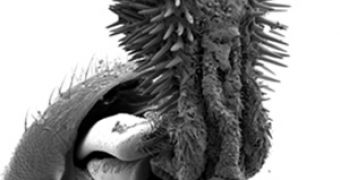There is a tough war going on between the two sexes, in which the male wants to be sure the offspring are his, while the female is looking for the best male to father her progeny. The tougher the war, the more extreme the weaponry, like in duck males, that have developed extremely large and complicated penises.
Sometimes, this can reach the absurd: the genitals of male seed beetles are extremely spiny, helping in anchoring the males inside the females, as they try to fertilize them. But this is too much, as the spikes can damage the females and compromise the breeding process.
Swedish researchers at Uppsala University, led by evolutionary biologist G?ran Arnqvist, have found that the female counteract by growing genitals that are even tougher than the spinier male genitals. The speed of the "weaponry" shifts in this battle of the sexes could explain how new species evolve.
The team focused on seven species of seed beetles, measuring a few millimeters, which attack pulses seeds worldwide. Some seed beetle species display over 100 spikes on male genitals, while others none. But the researchers discovered that as male penises became spikier and more harmful, females had evolved tougher genitals to protect themselves. And the more acute the arms race turned, the fewer offspring females were generated, probably in an effort made by females to deal with male damage. "Normally we think of evolution being adaptive, with organisms becoming better and better adapted to their lifestyle," Arnqvist told LiveScience.
"Here we have an example of evolution that leads to something bad. We've been able to confirm an old theoretical prediction that arms races between males and females can be costly for species."
In the case of internal fecundation, which implies males copulating with females, the female has a greater control over fecundation (as opposed to external fecundation), and in this case "male genitalia evolve the most rapidly. Understanding why male and female genitalia can change so rapidly is very interesting for understanding how new species are formed.", Arnqvist said.

 14 DAY TRIAL //
14 DAY TRIAL //